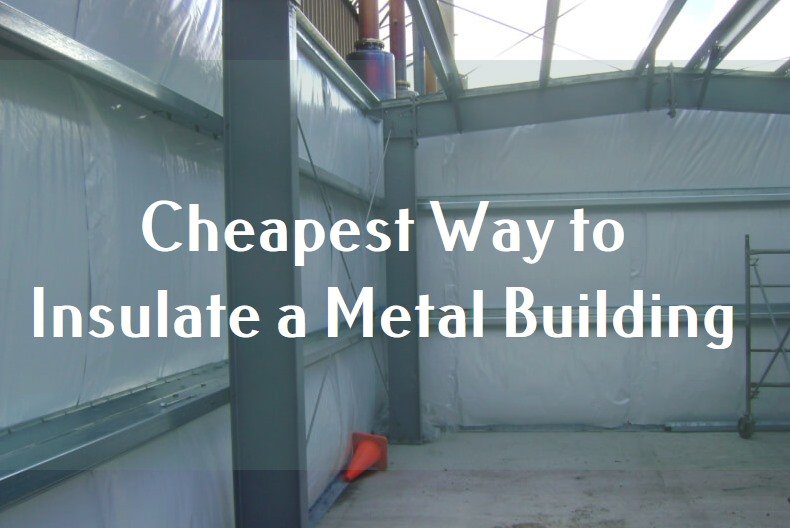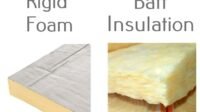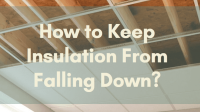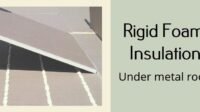Metal structures are often constructed without insulation, primarily due to cost considerations. However, the decision to insulate a metal building can lead to substantial energy savings, which can offset the initial investment over time.
This is particularly true regardless of the building’s use, be it a metal medical facility or an automobile production plant. Moreover, insulation plays a critical role in enhancing the comfort of occupants and protecting the contents within the building from temperature extremes.
Depending on where you live, metal buildings may require insulation to last longer. The article will discuss the cheapest way to insulate a metal building and the best types of insulation available.
Living in areas with high humidity and significant temperature fluctuations demands careful selection of insulation material. The right choice per square foot improves energy efficiency and prevents problems like condensation and mold growth.
In such climates, insulation acts as a barrier, maintaining a stable internal environment and protecting the metal building from the adverse effects of moisture and temperature changes.
Condensation will develop if there is a considerable temperature difference between the inside and the outside. Building corrosion and rust can also be brought on by such dampness. Additionally, it might harm your stored treasures by encouraging the growth of mold and mildew.

Incorporating easy-to-install insulation in your pre-engineered metal building can effectively maintain the internal temperature and significantly reduce heat loss. This not only enhances the energy efficiency of the building but also contributes to a more comfortable and controlled environment.
Insulation in metal buildings is especially beneficial in reducing the noise from rain and wind, adding an extra layer of comfort for occupants. You will also be able to heat and cool your building with more efficiency, saving you money on energy costs.
Insulation for a Metal Building
Choosing the correct insulating scheme can significantly increase a metal structure’s long-term structural integrity and longevity. Insulation acts as a protective layer, reducing the stress on the building caused by thermal expansion and contraction.
This not only extends the lifespan of the building but also helps in maintaining its aesthetic appeal by preventing issues like rust and corrosion. The advantages of selecting the ideal insulation system for your metal structure include the following, to name a few:
- Superior air barrier with a range of facings
- Decreased heat gain and loss
- More effective insulation
- Lower condensation
- Controlled indoor climate
- More sound insulation
Insulation Options for a Metal Shed
The option for insulating your metal building is not unlike insulating any other kind of shelter, but it requires specific considerations due to the metal’s properties. However, selecting the optimum insulation for a metal shed differs from other sheds since metal has different thermal qualities than wood or plastic.
- ISO rigid foam – Cutting ISO stiff foam to size is easy, but the hardness makes attaining a snug fit more difficult.
- Closed-cell spray foam- This installation requires specialized safety equipment, such as a suit and mask, and is time-consuming. But once it gets going, it works swiftly.
- Fiberglass batts – Between the wall studs are placed batts, either faced or unfaced. The fiberglass insulation for metal building installation becomes challenging if there are no studs, and you will need to locate bolts to attach them to the walls.
- Mineral fiber – Mineral fiber is inserted between studs similarly to fiberglass. Again, the application is challenging without studs.
- Blown-in cellulose is easy to apply and less harmful than polyurethane closed-cell foam, making it a popular choice for DIY enthusiasts. You must install a barrier to stop the loose fill from spilling onto your shed floor.
Read also: How to Insulate a Shed Floor
Cheapest Way to Insulate a Metal Building
How much does it cost to insulate a metal building? Depending on how they are installed, insulating materials can be categorized as cheap, accessible, or more challenging.
- Blown-in Cellulose
Even though applying loose cellulose is simple, you must first set up a barrier to prevent spills onto the metal shed’s floor.
- Mineral Fiber or Wood
Between the studs is put this insulating substance. It would be challenging to install this material if your construction lacks studs.
Read also: How to Put Insulation in Ceiling
- Fiberglass Batts
Batts should be put between the studs, whether faced or unfaced. Similar to mineral wood, they will be challenging to install if no studs exist. To mount them to the walls and ceiling, you will need fasteners.
- Closed-Cell Spray Foam
Although applying this substance is labor-intensive, it goes swiftly and simply once you get going. However, having specialized safety gear like a mask and a suit would be ideal.
- ISO Rigid Foam
It is easy to cut the stiff foam to the dimensions you need. It becomes challenging when you put it in a tight space.
Wrapping Up
When considering insulation for a metal building, it’s important to factor in the long-term benefits of energy efficiency. Proper insulation can significantly reduce heating and cooling costs, making the initial investment worthwhile.
Additionally, the ease of installation for certain types of insulation, like blown-in cellulose or fiberglass batts, makes them attractive options for those looking to undertake DIY projects.
Remember that dampness is your worst enemy when installing the cheapest way to insulate a metal building. Whether you use spray foam or ISO rigid foam boards, a suitable vapor barrier and enough ventilation should always be present.





